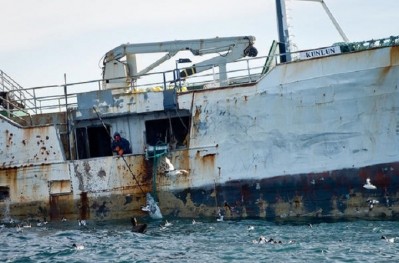Work needed for China fish processing to meet new EU rules, report
This is the conclusion of wildlife trade monitoring network TRAFFIC in its report entitled Understanding China’s Fish Trade and Traceability. The study examines the ability of China to meet European Union regulations designed to crackdown on Illegal, Unregulated and Unreported (IUU) fishing, which will come into effect from January 2010.
From this date all fish materials imported into the EU from China and other third countries will have to be accompanied by catch certificates. The certificates will then have to be validated by the flag State of the vessel that caught the fish.
China's vital role
China’s fish processing industry has grown rapidly; from 2.8 million tonnes in 1993 to 9.3 million tonnes by 2006. As the world’s leading exporter of marine products, developments in the country’s processing industry have the potential to have global consequences, said report author Shelley Clarke.
“By illuminating the role China plays in fish reprocessing, the report highlights the extent to which China must be involved in solutions to the problems of over fishing and IUU catches,” she added.
Traceability system
After analysing the extent to which China’s traceability systems in fish processing will be able to cope with the demands of the new EU rules, the report concluded “that there are no fundamental problems inherent in China’s current traceability system”.
The study added the system had recently supported several tracebacks in response to contamination issues. However, it noted that “a routine, random audit programme, if not already implemented, would lend further confidence to the system”.
The study, funded by the UK Government, also examined the current structure of the country’s fish processing industry and looked at the rigourness of documentation schemes in place to combat infiltration of illegally sourced fish.
China's complex system
Species examined in the report include pollock, cod, salmon, redfish, haddock, whiting, coalfish, hake, toothfish and tuna. It estimated more than half of the raw materials for China’s re-processing industry come from the Russian Federation including major inputs of cod and salmon as well as large quantities of imported “unspecified” fish.
But, the report pointed out, determining the quantities of species of fish being re-processed is difficult. Customs systems both in China and in some importing countries lack sufficient detail in commodity codes and usually do not check whether fish imports are classified under the appropriate code.
Product traceability is also made more challenging because fish may legally change hands several times whilst in China, the study found.
The report recommended streamlining current monitoring systems into a single, integrated and effective traceability system. It also said the EU, among others, should advise China on how to comply with EU regulations as well as provide intelligence for fisheries enforcement in countries which may be the source of imported IUU fish into China.





















